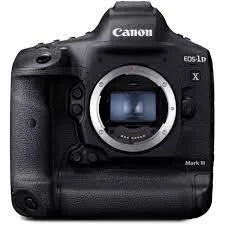Camera head-to-head: Canon v Nikon v Sony
I bought a Nikon because I didn’t want my camera to be made by a company that made photocopiers…!
Canon EOS-1D X Mark III
$6,499 MRP
DSLR
20.1 MP CMOS sensor (5472 x 3648, full frame, 36 x 24 mm)
20 fps
30 sec to 1/8000 sec
191 focus points
Auto, ISO 100-102400 (expands to 50-819200)
Dual CFexpress type B memory cards
1,000-frame buffer capacity
GPS
1440 g (3.17 lb / 50.79 oz)
2,850 shots with LP-E19 lithium-ion battery
$3,299 MRP
DSLR
45.7 MP BSI-CMOS sensor (8256 x 5504, full frame, 35.9 x 23.9 mm)
7 fps
30 sec to 1/8000 sec
151 focus points
Auto, ISO 64-25600 (expands to 32-102400)
SD/SDHC/SDXC (UHS-II supported) + XQD memory cards
51-frame buffer capacity (using XQD card and 14-bit lossless RAW)
No GPS
1005 g (2.22 lb / 35.45 oz)
1,840 shots with EN-EL15a lithium-ion battery
Sony a9 II
$4,500 MRP
Mirrorless
24 MP BSI-CMOS sensor (6000 x 4000, full frame, 35.6 x 23.8 mm)
20 fps
30 sec to 1/8000 sec (1/32000 sec electronic)
693 focus points
Auto, ISO 100-51200 (expands to 50-204800)
Dual SD/SDHC/SDXC (UHS-II compatible) memory card slots
241-frame buffer capacity (compressed RAW)
No GPS
678 g (1.49 lb / 23.92 oz)
690 shots with NP-FZ100 battery
Canon, Nikon and Sony are the three premier brands in photography equipment. I opted for Nikon, and I’ve been regretting it ever since!
No, not really, but I’m sick to death of the low frame rates. My D850 only manages 7 fps, and even with a battery pack it’s only 9 fps, which is pitiful compared to the 20 fps offered by the top-of-the-line Canon and Sony cameras.
The other problem is the buffer capacity. The D850 is better than the D810, but it’s still not a patch on the Canon, in particular. I saw a demo at a trade show once, and the lady behind the stand simply kept her finger on the shutter for 30 seconds, and it never slowed down at all. Amazing!
Fortunately, I won enough betting against England winning the 2020 Euros to be able to replace my old Nikon D810 with the new D880, which should be a vast improvement, but still…
The Canon obviously has the most impressive specs, but it’s almost double the price of the Nikon!
The big advantage of the Sony is its weight. Because it’s a mirrorless camera rather than a DSLR, it’s a lot lighter, but that means you have to use an Electronic Viewfinder, and personally I prefer to see the world in real time rather than what it was like a fraction of a second ago! The other big disadvantage of switching to a mirrorless system is that you need to buy special lenses or put up with using an adaptor all the time. Not ideal.
This comparison chart focuses on the most important features to wildlife photographers. If you want to compare any more features, I suggest you head over to DP Review, which has an excellent side-by-side comparison tool that allows you to check the features of just about any camera on the market.
In the end, choosing a camera is a very personal decision, so I’ll leave it up to you to decide. Good luck…!
If you’d like to order a framed print of one of my wildlife photographs, please visit the Prints page.
If you’d like to book a lesson or order an online photography course, please visit my Lessons and Courses pages.



